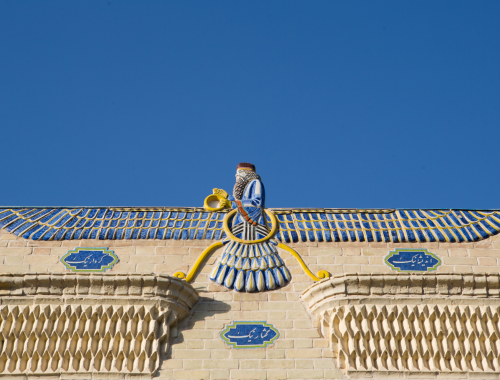
Bridging Ancient Visions: Similarities Between Zoroastrianism and Hinduism
Zoroastrianism and Hinduism stand as two ancient religions with roots deeply embedded in the historical tapestry of human civilization. While distinct in many aspects, these faiths share striking similarities that reflect the interconnectedness of religious thought in the ancient world. In this exploration, we delve into the commonalities between Zoroastrianism and Hinduism, drawing upon historical facts and references to illuminate the threads that connect these venerable traditions.
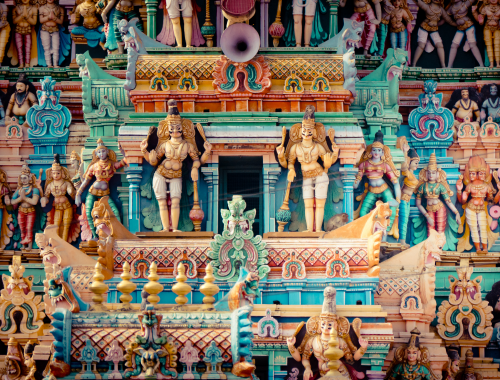
Cosmic Dualism:
- Zoroastrianism: At the core of Zoroastrianism is the concept of cosmic dualism, emphasizing the eternal struggle between the forces of good (Ahura Mazda) and evil (Angra Mainyu). This dualistic worldview shapes Zoroastrian ethics and the understanding of the divine.
- Hinduism: Hindu cosmology also features dualistic elements, particularly in the form of Brahman (the ultimate reality) and Atman (the individual self). The eternal dance of creation and destruction is embodied in deities like Shiva, reflecting a cosmic balance.
Fire as Sacred Symbol:
- Zoroastrianism: Fire holds a central place in Zoroastrian worship. The eternal flame symbolizes purity and the presence of Ahura Mazda. Fire temples are integral to Zoroastrian religious practice.
- Hinduism: In Hinduism, fire (Agni) is a sacred element used in rituals and ceremonies. The fire god Agni is considered a messenger between humans and the divine, highlighting the purifying and transformative qualities of fire.
Veneration of Natural Elements:
- Zoroastrianism: Zoroastrian reverence for nature is evident in the worship of elements such as fire, water, and earth. The connection between the divine and the natural world is intrinsic to Zoroastrian rituals.
- Hinduism: Hinduism similarly venerates natural elements, with rivers like the Ganges considered sacred, and deities associated with natural forces, such as Varuna, the god of water.
Ethical Teachings:
- Zoroastrianism: Zoroastrianism places a strong emphasis on ethical conduct and the battle between truth (Asha) and falsehood. Good thoughts, good words, and good deeds are foundational to Zoroastrian morality.
- Hinduism: Hindu ethical teachings are enshrined in concepts like dharma (righteous duty) and karma (the law of cause and effect). The pursuit of moral and ethical living is integral to Hindu philosophy.
Cyclic Concept of Time:
- Zoroastrianism: Zoroastrianism traditionally portrays time as linear, moving toward a final judgment and the triumph of good over evil in the future. This linear view distinguishes it from many other ancient religions.
- Hinduism: Hinduism, in contrast, embraces a cyclical concept of time with the eternal cycle of creation, preservation, and destruction (Samsara). The idea of reincarnation is central to this cyclical understanding.
Importance of Scriptures:
- Zoroastrianism: The Avesta is the sacred scripture of Zoroastrianism, comprising hymns, rituals, and teachings attributed to the prophet Zoroaster (Zarathustra).
- Hinduism: Hinduism encompasses a vast array of scriptures, including the Vedas, Upanishads, Bhagavad Gita, and Puranas. These texts serve as guides to philosophy, rituals, and spiritual knowledge.
Polytheistic Elements:
- Zoroastrianism: Zoroastrianism is often considered a monotheistic faith centered around Ahura Mazda. However, it acknowledges spiritual entities like Yazatas and Fravashis, akin to divine or angelic beings.
- Hinduism: Hinduism is renowned for its polytheistic nature, with a diverse pantheon of deities representing various aspects of the divine. Devotees may choose a personal deity to worship based on their spiritual inclinations.
Iconic Symbolism:
- Zoroastrianism: The Faravahar, a winged symbol depicting a guardian spirit, is an iconic representation in Zoroastrianism, symbolizing the eternal struggle for righteousness.
- Hinduism: Hinduism employs a plethora of iconic symbols, including the Om symbol, lotus flower, and various deities’ images, each carrying profound spiritual meanings.
Finally, the shared elements between Zoroastrianism and Hinduism reveal the rich tapestry of ancient religious thought, emphasizing ethical conduct, reverence for nature, and the eternal dance between cosmic forces. While each tradition has its unique characteristics, the parallels underscore the interconnectedness of spiritual ideas across diverse cultures.
Below is a simplified comparison chart highlighting key similarities between Zoroastrianism and Hinduism:
| Aspect | Zoroastrianism | Hinduism |
| Cosmic Dualism | Emphasis on the eternal struggle between Ahura Mazda (good) and Angra Mainyu (evil). | Similar dualistic elements with Brahman (ultimate reality) and Atman (individual self). |
| Sacred Symbol – Fire | Fire is central to worship, symbolizing purity and the presence of Ahura Mazda. | Fire (Agni) is a sacred element used in rituals, representing purification and divine connection. |
| Veneration of Elements | Reverence for natural elements such as fire, water, and earth in rituals. | Similar veneration of natural elements, with rivers like the Ganges considered sacred. |
| Ethical Teachings | Strong emphasis on ethical conduct, with the triad of good thoughts, good words, and good deeds. | Emphasis on dharma (righteous duty) and karma (law of cause and effect) as ethical guides. |
| Concept of Time | Traditionally linear, moving toward a final judgment and the triumph of good in the future. | Cyclical concept of time with the eternal cycle of creation, preservation, and destruction. |
| Importance of Scriptures | The Avesta is the sacred scripture attributed to Zoroaster, containing hymns and teachings. | Vast array of scriptures including the Vedas, Upanishads, Bhagavad Gita, and Puranas. |
| Polytheistic Elements | Often considered monotheistic, but acknowledges spiritual entities like Yazatas and Fravashis. | Polytheistic nature with a diverse pantheon of deities representing various aspects of the divine. |
| Iconic Symbolism | Iconic symbol: Faravahar, depicting a winged guardian spirit. | Multiple iconic symbols, including the Om symbol, lotus flower, and images of various deities. |
Please note that while there are similarities, both religions have distinct beliefs and practices. This chart provides a broad overview, and further exploration may reveal additional nuances within each faith.
FAQ: Similarities Between Zoroastrianism and Hinduism
Q1: Are Zoroastrianism and Hinduism monotheistic or polytheistic religions?
A1: Zoroastrianism is often considered monotheistic, centered around Ahura Mazda, but it acknowledges spiritual entities. Hinduism is predominantly polytheistic, with a diverse pantheon of deities.
Q2: Do both religions share a belief in cosmic dualism?
A2: Yes, both Zoroastrianism and Hinduism incorporate elements of cosmic dualism, emphasizing the eternal struggle between forces of good and evil.
Q3: Is fire considered sacred in both Zoroastrianism and Hinduism?
A3: Yes, both religions consider fire as sacred. In Zoroastrianism, it symbolizes purity and the presence of Ahura Mazda. In Hinduism, fire (Agni) is used in rituals for purification.
Q4: Do Zoroastrianism and Hinduism share similar ethical teachings?
A4: Yes, both religions emphasize ethical conduct. Zoroastrianism promotes good thoughts, words, and deeds, while Hinduism guides ethical living through concepts like dharma and karma.
Q5: Are there similarities in the reverence for natural elements?
A5: Yes, both religions show reverence for natural elements. Zoroastrianism includes rituals involving fire, water, and earth. Hinduism considers rivers like the Ganges as sacred.
Q6: Do Zoroastrianism and Hinduism have a cyclical or linear concept of time?
A6: Zoroastrianism traditionally follows a linear concept, moving toward a final judgment. Hinduism embraces a cyclical concept with the eternal cycle of creation, preservation, and destruction.
Q7: What are the primary scriptures in Zoroastrianism and Hinduism?
A7: In Zoroastrianism, the Avesta is the sacred scripture. Hinduism encompasses a vast array of scriptures, including the Vedas, Upanishads, Bhagavad Gita, and Puranas.
Q8: Is there a common theme of iconic symbolism in both religions?
A8: Yes, both religions employ iconic symbolism. Zoroastrianism uses the Faravahar, a winged symbol. Hinduism has multiple iconic symbols, including the Om symbol and images of deities.
Q9: Are there polytheistic elements in Zoroastrianism?
A9: While Zoroastrianism is often considered monotheistic, it acknowledges spiritual entities like Yazatas and Fravashis, exhibiting some polytheistic elements.
Q10: How do these religions view the ultimate reality or divine?
A10: In Zoroastrianism, the ultimate reality is Ahura Mazda. Hinduism perceives Brahman as the ultimate reality, with diverse deities representing different aspects of the divine.
Q11: Can both religions coexist with a belief in individual spirituality?
A11: Yes, both Zoroastrianism and Hinduism allow for individual spiritual practices. Zoroastrianism emphasizes the individual’s choices between good and evil, while Hinduism encourages personal exploration and devotion.
Q12: How do the religions address the concept of karma?
A12: In Hinduism, karma is a central concept, representing the law of cause and effect. Zoroastrianism doesn’t explicitly have the concept of karma, but ethical deeds and consequences are emphasized.
Q13: Are there commonalities in the importance of rituals in Zoroastrianism and Hinduism?
A13: Yes, both religions place significance on rituals. Zoroastrian rituals often involve fire and prayers, while Hinduism has a rich tapestry of rituals associated with worship, ceremonies, and life events.
Q14: Is the concept of the afterlife similar in both religions?
A14: While details differ, both religions acknowledge an afterlife. Zoroastrianism envisions a final judgment leading to paradise or punishment. Hinduism incorporates the cycle of reincarnation (Samsara) and the pursuit of liberation (Moksha).
Q15: How do Zoroastrianism and Hinduism view the role of prophets and spiritual leaders?
A15: Zoroastrianism recognizes Zoroaster as a prophet, conveying divine teachings. Hinduism has various spiritual leaders, gurus, and historical figures whose teachings are revered.
Q16: Do both religions have a concept of divine justice and cosmic order?
A16: Yes, both Zoroastrianism and Hinduism include a sense of divine justice and cosmic order. Zoroastrianism emphasizes the battle between truth and falsehood, while Hinduism sees the cosmic order maintained through dharma.
Q17: Are there shared perspectives on the interconnectedness of all life in Zoroastrianism and Hinduism?
A17: Both religions acknowledge the interconnectedness of life. Zoroastrianism emphasizes the interplay between ethical choices and cosmic harmony, while Hinduism perceives all life as interconnected through the concept of Brahman.
Q18: Can followers of both religions engage in worship through rituals and prayers?
A18: Yes, worship through rituals and prayers is integral to both religions. Zoroastrians engage in rituals involving fire, and Hindus participate in a variety of rituals, ceremonies, and prayers.
These additional FAQs further explore various aspects of the similarities between Zoroastrianism and Hinduism, shedding light on the spiritual, ethical, and cosmological dimensions within each tradition.

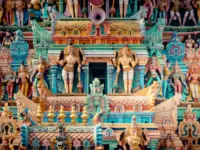


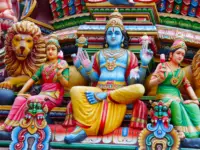

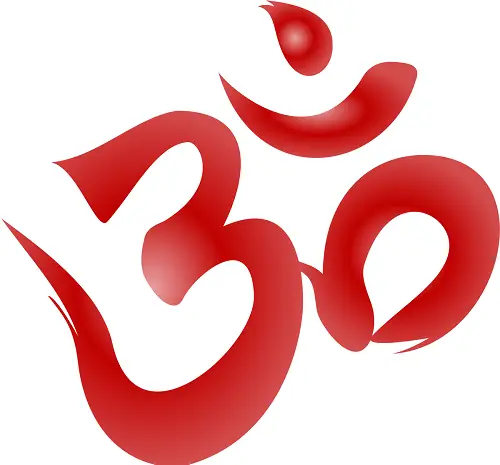





Leave a Reply